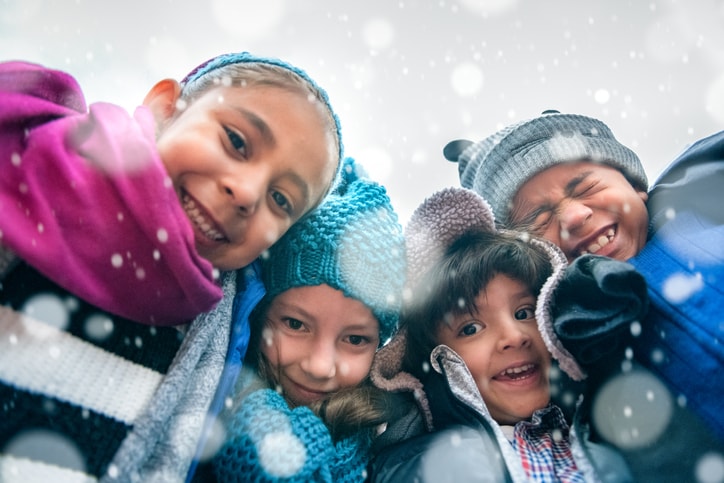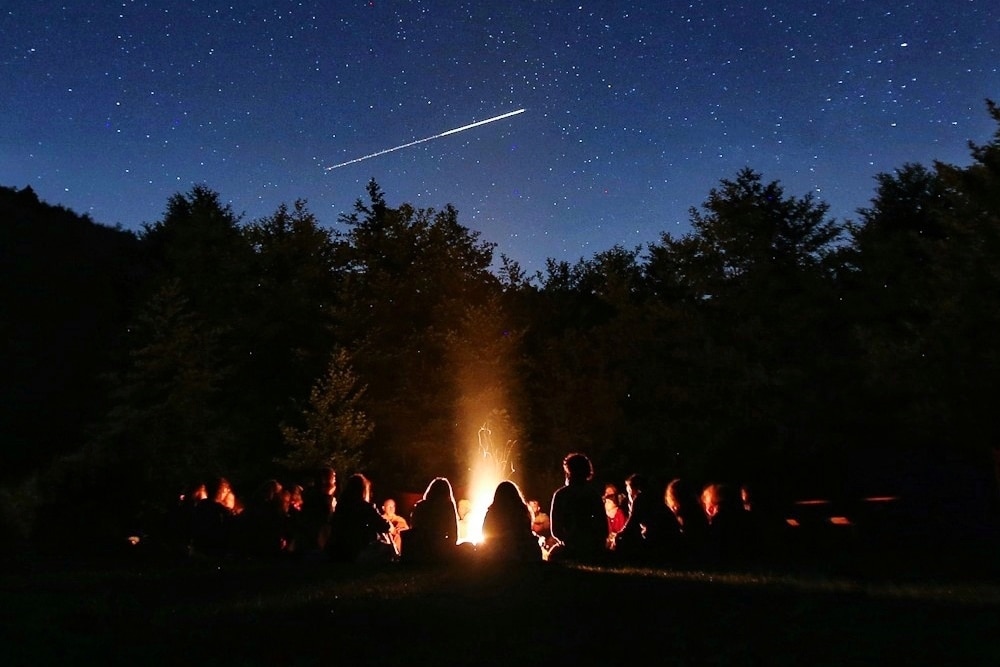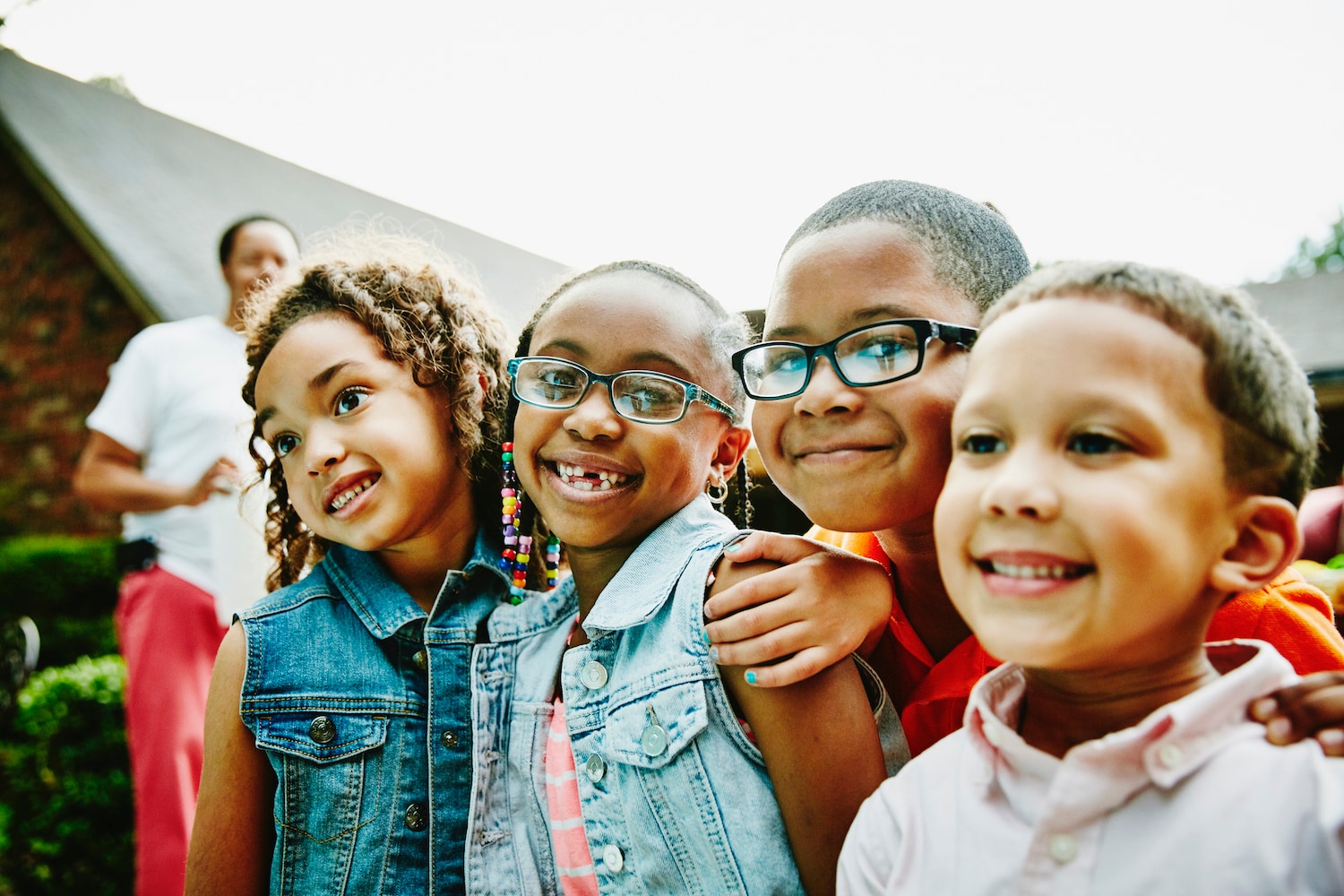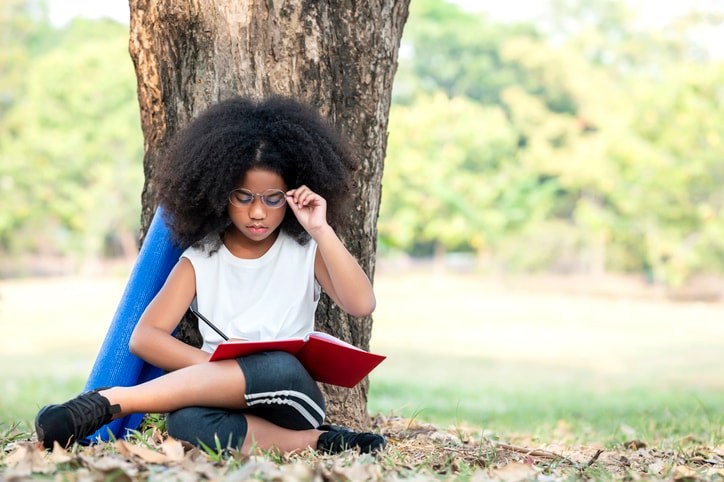When December rolls around, it’s nearly impossible to enter a mall, watch TV or go online without the reminder that Christmas is coming. The Santa-laden holiday is celebrated by a whopping 88% of the U.S. population, according to research by Statista. While Xmas clearly rules our nation’s festivities, there are several other holidays steeped in rich tradition being celebrated throughout December. In fact, there are many different winter holidays around the world.
Feeling a bit overloaded by all the talk of tinsel and elves on shelves? Try introducing kids to these nine diverse December holidays. Bonus: It’ll expand their horizons and give them a greater appreciation and understanding of cultures outside their own.
9 winter holidays around the world to share with kids
1. St. Lucia Day
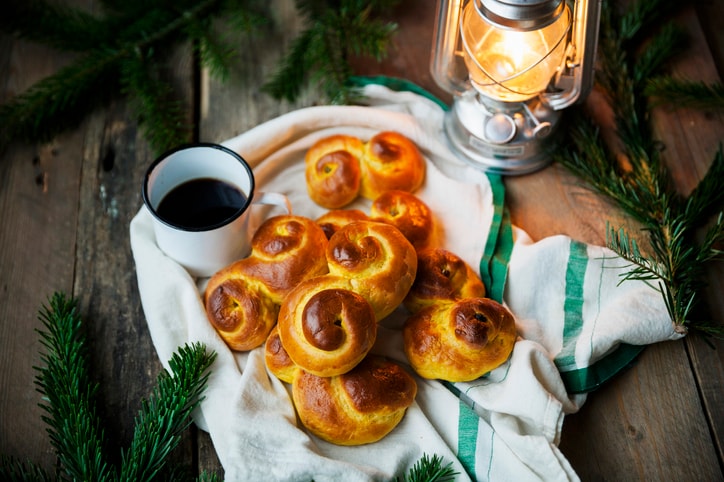
What is St. Lucia Day? Also referred to as Saint Lucy’s Day, this day honors the Christian martyr, Lucia. “St. Lucia Day is when we turn on the Christmas lights, as St. Lucia carried candles in darkness to serve the poor,” says Gina Nicolas, editor and mother of two (with one on the way), living in Paris.
When is St. Lucia Day? Every December 13.
Where is it celebrated? Mainly Sweden and other Scandinavian countries, as well as Italy.
How is it celebrated? Festivities often entail processions or celebrations at home where a young woman dresses the part of Lucia, wearing a wreath with candles. Traditional sweets like the S-shaped Lussekatt (saffron buns similar to cinnamon buns) and gingerbread cookies, as well as glögg (mulled wine) or coffee are served. “We have done both the traditional Swedish saffron rolls for breakfast,” says Nicolas, “and a Sicilian-themed meal as St. Lucia was from Sicily.”
Learn more about St. Lucia Day:
- Information on St. Lucia Day from VisitSweden
- Kirsten’s Surprise (an American Girl book about St. Lucia Day) by Janet Shaw (Amazon)
- Lucia’s Morning by Ewa Rydaker (YouTube Read Aloud)
- Festivals Around the World – St. Lucia’s Day (YouTube – Gwinnett County Public Library)
2. Bodhi Day
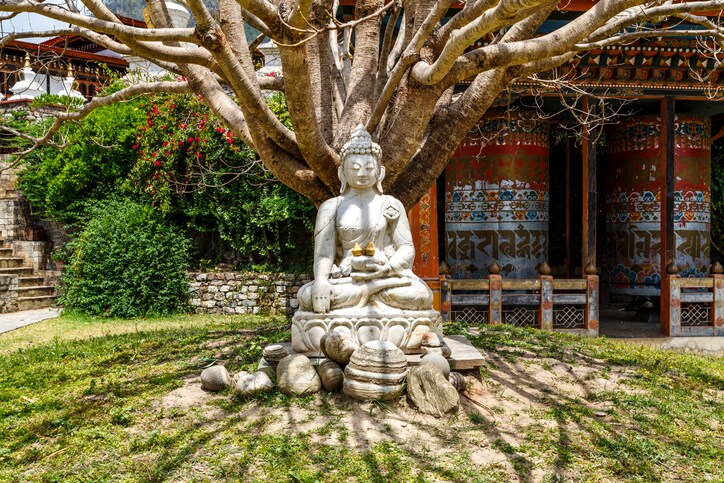
What is Bodhi Day? Bodhi Day commemorates the day the Buddha (sometimes referred to as Siddhartha or Shakyamuni) achieved spiritual enlightenment under the Bodhi tree.
When is Bodhi Day? Every December 8.
Where is it celebrated? All around the world by the 488 million plus individuals who practice Buddhism, including in China, the Philippines, Japan and Vietnam.
How is it celebrated? “Buddhist children can celebrate Bodhi Day through reflecting on the teachings of the Buddha and their importance in everyday life,” says Reverend Sol Kalu of the Honpa Hongwanji Mission of Hawaii. “Children can draw watercolor or crayon illustrations or pictures of the Buddha in various postures of meditation but especially under the Bodhi tree. For older teens, it might be appropriate to study the meaning of achieving Enlightenment, the Four Noble Truths and the Noble Eightfold Path.”
Lori Bruner Okamura, librarian for preschool to 8th grade students at Hongwanji Mission School in Honolulu, recommends younger children start by reading “Under the Bodhi Tree” by Deborah Hopkinson while older kids can learn more by watching YouTube videos about the Buddha’s life and the original Bodhi tree.
Learn more:
- Informative video on Bodhi Day (YouTube – Miami Children’s Museum)
- Informative video about Bodhi Day (YouTube – PAL LAB Reads)
- The Four Noble Truths for Kids (YouTube – Dharma Kids Collective)
3. La Purísima / La Gritería
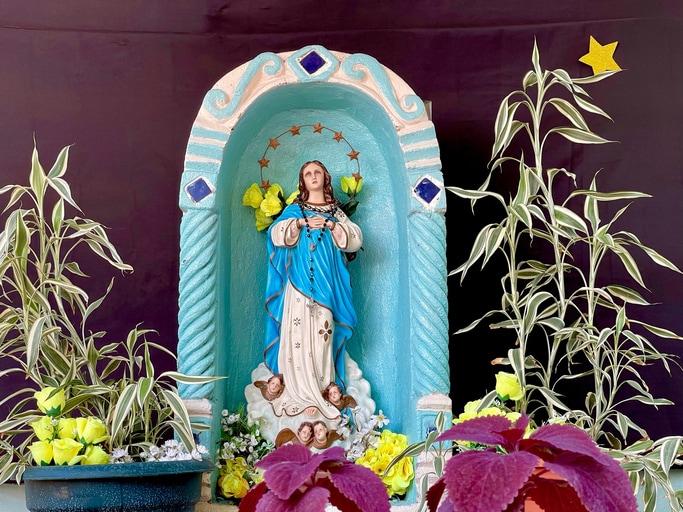
What is La Purísima / La Gritería? It’s a Catholic celebration of the Virgin Mary that has become a cultural festival for many Nicaraguans.
When is La Purísima / La Gritería? Every December 7.
Where is it celebrated? Nicaragua and Miami, as well as any area with a large Nicaraguan diaspora.
How is it celebrated? “People set up altars (statues of the virgin with angels and flowers) wherever people can stand in front of it, and sing songs particular for the occasion. Then they get candy and other sweets, and you do that from house to house,” says Lucía Huete-Suarez, a mother of three living in Miami.
There is also a call and response aspect. Whenever you approach a new altar, you may be asked, “Quien causa tanta alegria? (“Who causes so much joy?”)” to which you respond “La concepcion de Maria! (“The conception of the Virgin Mary!”)” Afterward, people receive treats that range from sugarcane and bananas to nacatamales (Nicaraguan tamales), as well as toys for children. In Nicaragua, festivities span across the entire nation and include fireworks at multiple intervals throughout the day, with a large show at the end of the night.
Learn more:
- December Celebrations in Nicaragua (ViaNica)
- Spanish language informative video on La Gritería/La Purísima (YouTube – JP+)
- Video of various Purísima altars to use as inspiration for your own (YouTube)
4. Kwanzaa
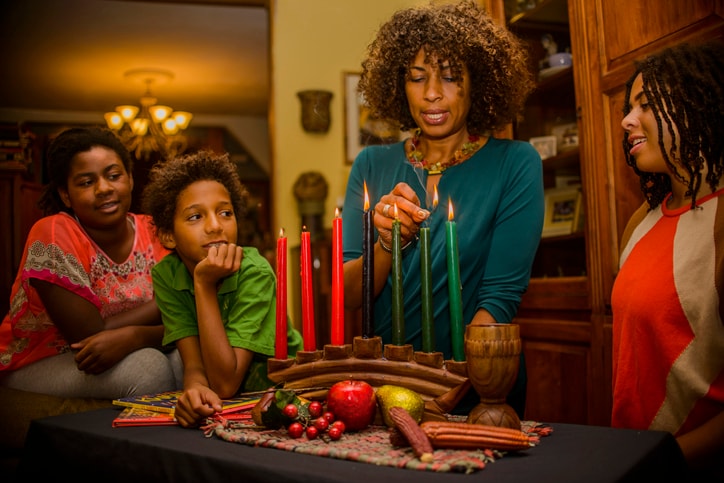
What is Kwanzaa? Initially created by activist, author and professor of Africana studies Maulana Karenga, the week-long celebration is meant to unify, uplift and celebrate the Black American community.
When is Kwanzaa? Annually, December 26 through January 1.
Where is it celebrated? Mainly in the United States, as well as parts of Canada and the Caribbean.
How is it celebrated? The festivities may involve food, music, decorations, dancing, gifts and, of course, observing the seven principles (1. umoja / unity, 2. kujichagulia / self-determination, 3. ujima / collective work and responsibility, 4. ujamaa / cooperative economics, 5. nia / purpose, 6. kuumba / creativity, and 7. imani / faith) while lighting one candle on the kinara for each day of the celebration.
“For younger children, Kwanzaa can be celebrated by incorporating dance, music, arts and crafts, storytelling, and attending community events,” says the team at the Children’s Kwanzaa Village (an organization that hosts a Kwanzaa celebration each year and was co-founded by Brooklyn-based Danielle Fairbairn Bland and Keanna Hinds, with assistance from Digital Content Manager Asa-Mari Zephirin). For teens, they recommend urging them to engage in community service and incorporate the seven principles in their daily life. For non-Black families, the CKV recommends forming genuine relationships with members of the Black community who observe Kwanzaa in order to be welcomed into their space.
Learn more:
- What Is Kwanzaa? (University of Central Florida)
- Sesame Street: Kwanzaa (YouTube)
- The True Meaning of Kwanzaa (Disney – YouTube)
5. Hanukkah
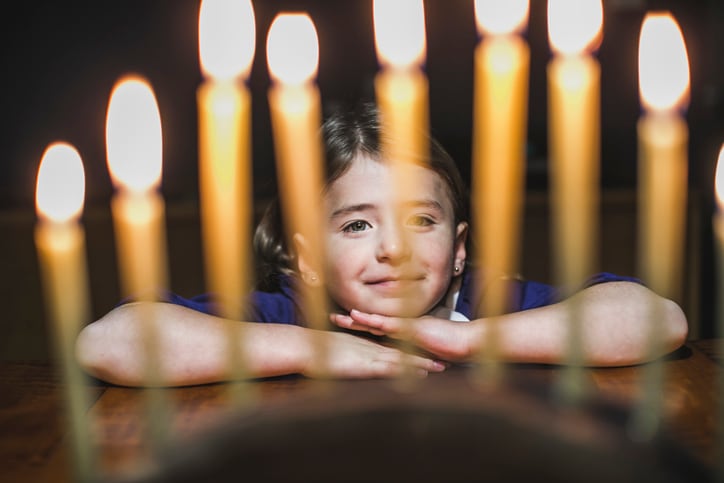
What is Hanukkah? Also known as the Festival of Lights, Hanukkah (sometimes spelled Chanukah) is the Jewish eight-day celebration commemorating the miracles the Maccabees experienced in the 2nd century BCE. After Christmas, this is one of the most well-known winter holidays around the world.
When is Hanukkah? The holiday is celebrated on the 25th day of Kislev in the Hebrew calendar, which generally falls toward the end of the year with some days in December (In 2024, Hanukkah lands December 25 through January 2).
Where is it celebrated? All around the world by Jewish people.
How is it celebrated? “We celebrate Hanukkah by lighting the menorah, eating latkes and donuts and playing dreidel. We (also) give small gifts to the kids for eight nights,” says Jamie Davis Smith, an attorney in Washington D.C., raising four kids.
“We spend each evening of Hanukkah talking about mitzvahs (kind and selfless gestures or actions for others) we did that day,” says Anna Copel, a homeschooling mom living in Denver. “Then light candles and give gifts.”
Cat Bowen, a mom and writer living in New York, says both her kids light their own menorahs as they say the blessing. “Then? It’s time to get frying. We make our own sufganiyot recipe and fill it with whatever the kids grab — jelly, Nutella, frosting. We make an old recipe for latkes and fry up beer-battered fish,” she says. “We wait until after dessert to open gifts! We usually cook to Adam Sandler’s ‘Chanukah Song’.”
Learn more:
- What is Hanukkah? (Chabad.org)
- Hanukkah (National Geographic Kids)
- Hanukkah Craft Ideas (Creative Jewish Mom)
- Rugrats Chanukah Episode (Amazon Prime Video)
6. St. Nicholas Day
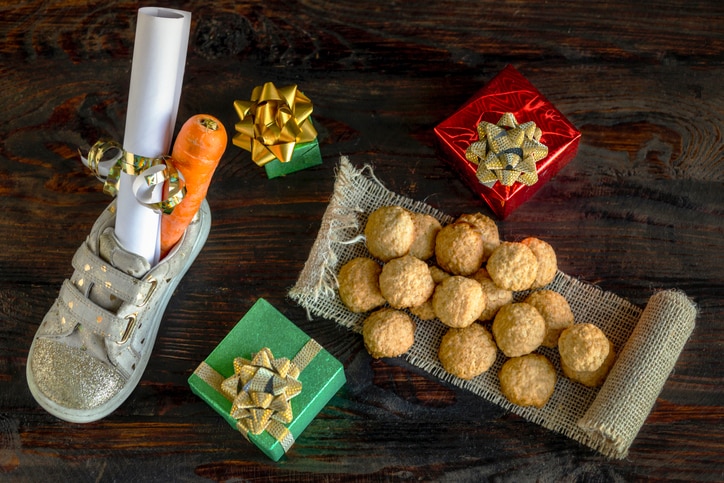
What is St. Nicholas Day? This holiday celebrates the life of the real St. Nicholas, who was known as a protector of children and was a giver of gifts.
When is St. Nicholas Day? Every December 6.
Where is it celebrated? Mainly throughout Europe, including the Netherlands, Luxembourg and Belgium.
How is it celebrated? Typically, children put their shoes outside their door in hopes that St. Nicholas will arrive in the night and leave a little treat inside. The gifts are generally something small and might also involve something to eat (like candy or other sweet treats).
“I usually give the children something that they will wear during the holiday season,” says Nicolas. “Last year, it was party clothes and a wooly hat. This year it will be pajamas.”
Learn more:
- St. Nicholas Center
- Our St. Nicholas Day Traditions (YouTube)
- The Baker’s Dozen: A Saint Nicholas Tale, with Bonus Cookie Recipe and Pattern for St. Nicholas Christmas Cookies by Aaron Shepard
7. Las Posadas
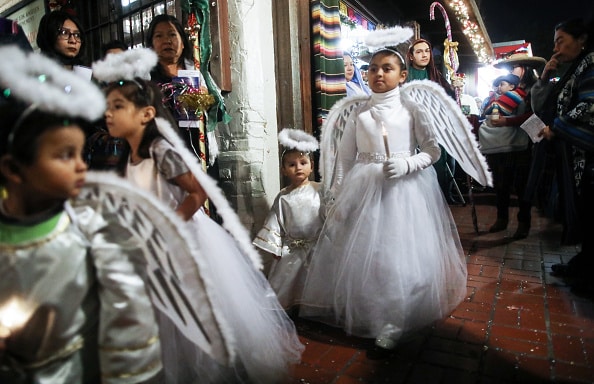
What is Las Posadas? Las Posadas (which translates to “the inns” or “the lodgings”) are a nine-day celebration that honor the journey of Mary and Joseph from Nazareth to Bethlehem as they searched for shelter prior to the birth of Christ.
When are Las Posadas? Starting December 16 and ending on Christmas.
Where is it celebrated? While the holiday originated in Spain, it’s become especially popular in Mexico, Guatemala and other Latin American countries, as well as areas with a large Latin diaspora.
How is it celebrated? Las Posadas are something like a re-enactment play in that participants dress up as and take on the roles of Mary, Joseph and the innkeepers who turned them away. Others may dress up as shepherds and angels. During the festivities, those playing Joseph and Mary lead a procession, with everyone holding candles and singing Spanish-language Christmas carols called villancicos. Eventually, the procession arrives at someone’s home (the “inn”). The “innkeepers” initially turn Mary, Joseph and the others away; however, they eventually invite everyone inside to pray around the Nativity, as well as eat and celebrate the upcoming arrival of the baby Jesus. Frequently, there will also be a star-shaped piñata filled with sweets and toys for children to break at each home.
Learn more:
- Las Posadas: A Holiday Tradition (Old Town San Diego Historic Park – YouTube)
- Experience the magic of Las Posadas in these 5 U.S. cities (Travelocity)
- What are Las Posadas? (YouTube)
- Las Posadas Navideñas en Guatemala (YouTube)
8. Yule (Winter Solstice)
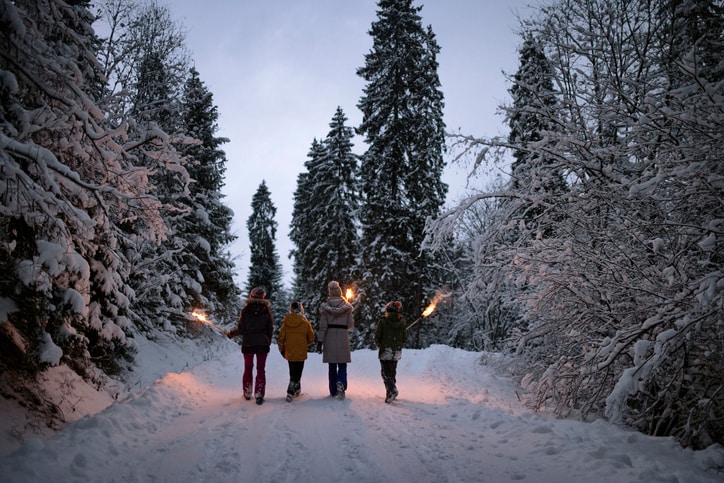
What is Yule? Yule is a pagan celebration of the winter solstice, the longest night of the year, which for many signifies the sun’s “rebirth” and a time for joy.
When is Yule? Typically on December 21, though for some, festivities may last a week or up to a month.
Where is it celebrated? While believed to have originated in Germanic countries, Yule is celebrated by many around the world.
How is it celebrated? While Yule celebrations can vary, some commonalities include burning a yule log, singing carols, taking an evening walk in nature, having a bonfire and enjoying a feast.
“We celebrate the winter solstice with two small gifts: a light of some kind (a pretty candle or solar lantern) and a nice (but used) book for each child,” says Lara Payne, a college professor and mother of two.
Nicole Laniel, a massage therapist and mother in Colorado, says she starts the first day of Yule by blessing her house and doing a cleansing with sage, followed by cooking a stew for her and her son. “Then he opens one small gift,” Laniel says. “For the next 12 days, he gets a small gift to open, with a big one on New Year’s Day, and we buy a yule log to eat,” says Laniel. “We then re-bless the house and do a second cleansing and usually also fix a light soup to eat.”
Learn more:
- Yule Lore and Traditions (Wicca.com)
- How to Celebrate Yule (MabonHouse)
- 6 Pagan Yule and Winter Solstice Decoration Ideas (Peculiar Brunette – YouTube)
9. Chrismukkah
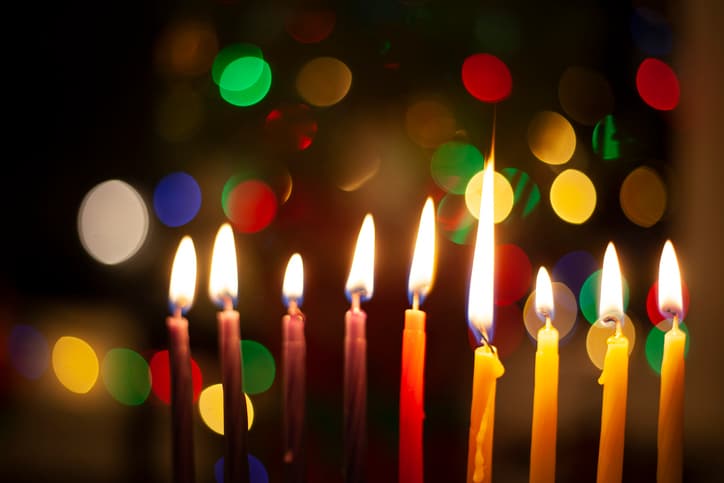
What is Chrismukkah? When Christmas and Hanukkah are equally important to the family members, some tend to combine the two into Chrismukkah (also sometimes spelled Christmukkah). It became more common in recent years thanks to the early aughts TV show, “The O.C.,” where the father character is Jewish and observes Hanukkah while his gentile wife celebrates Christmas.
When is Chrismukkah? Throughout December, generally during Hanukkah and Christmas and/or days in between.
Where is it celebrated? The idea of co-celebrations resonates with many interfaith families, though this is most likely happening mainly in the United States.
How is it celebrated? Families in which there are Jewish and Christmas-celebrating non-Jewish members simply find ways to combine the holidays together.
“We started celebrating Christmukkah when my aunt married a Jewish man,” says Shannon H., a mother of two in Seattle. “We had always done Christmas when I was growing up. My grandfather was a German Jew who fled Nazi Germany and then fought for America in the war, and it ruined his faith for him. The rest of us were all interested in learning more about the traditions of Hanukkah though, so we started lighting the menorah together when the celebrations overlap.”
Shannon says that now that she has children of her own, her family observes both holidays and calls it Christmukkah.
“My favorite part of our blended celebration is making jelly-filled eibelskievers (tiny balls of pancake). A great blending of the sufganyot (jelly donuts) from Hannukah and my grandma’s Danish heritage.” She adds, “We also always have latkes and my aunt’s Christmas trifle.”
Learn more:
- Why Seth Cohen’s Chrismukkah Is The Best Holiday | The OC | HBO Max
- Chrismukkah: Everything You Need to Know to Celebrate the Hybrid Holiday (Amazon)
- Chrismukkah: When Hanukkah and Christmas come together
- Raising a Chrismukkah Kid as a Hanukkah Mom (Austinmoms.com)
There’s no shortage of December holidays, so if you’re wondering how to get in multiple celebrations every week, we’ve got you covered. Enjoy your annual traditions, and, together with kids, learn how other families close out the year and maybe even incorporate some of these ideas into your own holiday celebrations.
